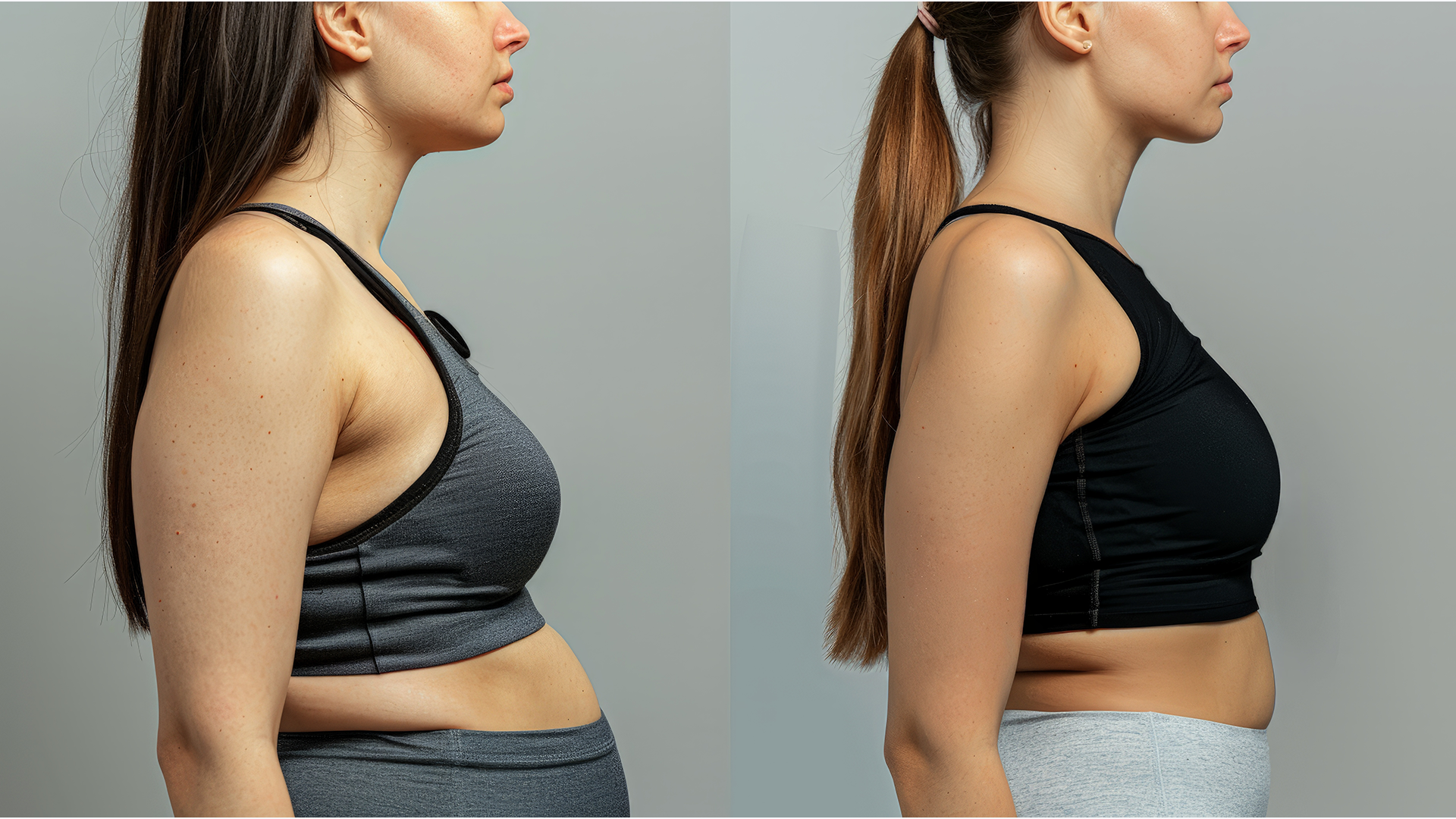If you think you know about every type of bariatric surgery there is, think again. There’s a new type of weight loss surgery available which promises to allow you to eat whatever you like and lose up to 2lb a week. It’s less invasive than most weight loss surgery, it’s less expensive, and it’s performed under local anesthetic within minutes.
Curious about what it is? Enter the AspireAssist device…
What is the AspireAssist Device?
The AspireAssist device is a weight loss option designed to tackle obesity in severely overweight people struggling to lose weight by traditional means. It involves surgically fitting a tube directly into the stomach which is then used to drain a large amount of the food the person eats straight into the toilet, bypassing the rest of the digestion process and avoiding fat from being absorbed and stored by the body.
While this may sound like a very promising and practical solution to a very common problem millions of people face, there are various issues anyone considering this type of surgery needs to consider very carefully before they make the drastic decision to go under the knife.
The procedure to have the AspireAssist device fitted is a relatively new type of weight loss surgery, having only been approved by the Food and Drug Administration in June 2016. Because of this, there are far fewer reviews around to help people understand the possible side effects of this type of treatment.
As with all weight loss surgeries, it’s absolutely essential that you understand the full scale of what you’re getting into before you opt for such extreme measures – so this article was written to try to help you with that.
Who is the device meant for?

The AspireAssist device is meant for overweight adults who have been struggling with obesity for a long time. In order to be considered for surgery, you will need to have a BMI of between 35 and 55, making this option only available to the extremely obese. Although the operation brings quick, dramatic results, it’s certainly not intended to be something to be used in place of eating a healthy, balanced diet.
In fact, having the AspireAssist device fitted means you’ll have to eat better than ever before. Because you’ll be limiting the amount of food which is actually digested by your body, you’ll need to ensure the food that you do eat is nutritionally rich to avoid you becoming malnourished.
Because of this, you have to ensure you’re fully committed to losing weight. You need to have the mental strength to cope with making healthier choices on an ongoing basis, and you have to be prepared to endure the sometimes painful recovery process following the operation itself.
Due to the fact that the device could be seen by many to be a form of ‘mechanical bulimia’, it’s not suitable for those with eating disorders. Although the operation is reversible, it’s not intended as a temporary fix, so those choosing it should ideally be committed to keeping the device fitted long-term.
How the AspireAssist device works
The AspireAssist device is in essence a tube, surgically fitted directly into the patient’s stomach, allowing them to drain the majority of the food they eat directly into a toilet rather than allowing it to be fully digested by the body.
The operation itself is usually performed under twilight sedation, avoiding the need for an overnight stay in most cases. During the procedure to have the device fitted, the surgeon makes an opening in the stomach, through which a tube is inserted. This tube stays in place and is routinely opened through the use of a clamp around 20 – 30 minutes after every meal, with the contents being emptied into the toilet. This process is called aspirating.
Following aspiration, water is flushed through the waste pipe to clean it, and the clamp is closed. The result is the patient only absorbs around 70% of the calories contained within the food they eat, and this inevitably results in rapid weight loss.
Because the pipe itself is only around 6mm in diameter, and the food will be undigested before it leaves the stomach, it’s imperative that you chew your food very thoroughly to avoid complications, but this is a good habit to get into anyway to help with long-term appetite control. It also gives your brain a chance to catch up and realise it’s no longer hungry before you finish your meal – again, a good habit to get into, and something that many overweight people struggle to achieve.
The entire drainage process takes around 5 – 10 minutes, and this has to be performed after every single meal for as long as you have the device in place.
Every 5 – 6 weeks, it’s necessary for the connector to be replaced, so having the AspireAssist device fitted is definitely a long-term commitment so long as you decide to keep the device in place. You do receive counseling and healthy mindset advice following surgery, and there’s also an online support community where you can chat with others who have had the same procedure. But ultimately, of course, the success of the surgery is down to you.
How much does the AspireAssist device cost?
Unfortunately, the AspireAssist cost isn’t currently listed as a covered procedure by any health insurer, although some people have managed to get their health insurer to partially pay for the procedure following their operation. Because this can’t be guaranteed, you should always assume that you will have to cover the full cost of the surgery yourself.
Obviously, this is a huge deciding factor when considering the operation, and also a very valid reason to not see the device as a temporary solution to a long-term problem.
The procedure itself isn’t cheap. Prices can range from $7k – $13k, making this a considerable investment. Nonetheless, if all else has and will continue to fail, and a person’s health is sure to continue deteriorating due to their obesity, they may still feel inclined to go ahead.
How effective is the AspireAssist device?
The AspireAssist device is extremely effective at assisting with weight loss. A study conducted by the FDA on the safety and effectiveness of the device found that dieters who had had the device fitted lost 12.1% of their body weight as opposed to the control group who lost only 3.6% over a 52 week time period. That same study also concluded that the AspireAssist device was safe for use.
In addition to this study, there have been countless people who have had this device fitted since 2016 – many with impressive results.
It’s clear that the AspireAssist device can work extremely well, but as with all good things, there are some potential drawbacks to having the device fitted.
What are the side effects of having the AspireAssist device fitted?
There are a few side effects you should know about before you commit to having the AspireAssist device fitted, such as:
- Significant pain for the first 2 – 3 days following surgery
- The possibility of infection
- Nausea/vomiting
- Inflammation/bleeding around the area the tube is inserted into the stomach
- Ulceration
Although these side effects are significant, the procedure, on the whole, is much less invasive and carries much fewer side effects than the majority of other bariatric surgeries.
AspireAssist reviews
Because of the relatively new emergence of the AspireAssist procedure, there are very few first-person reviews around at this stage. However, of those that are, the results are not always what the patient had hoped for, as is the case with Mary who left this review on Highya:
Others have had much more success, such as Les:
Having lost 30 pounds in 3 months, and being able to maintain his weight loss despite not eating well almost sounds too good to be true, right? Well, perhaps there is a catch…
Is the AspireAssist device a good choice for permanent weight loss?
While we can see the appeal of the AspireAssist device for people who have struggled for a long time with their weight, we would always encourage them to find a way to lose weight naturally if at all possible without resorting to any type of surgery.
In our opinion, the AspireAssist device could offer the patient a ‘free rein’ to eat absolutely anything they like (including poor quality, high-fat food) and still lose or at least maintain their weight. This encourages them to continue their poor eating habits and removes the responsibility from them to eat a healthy, balanced diet. In fact, because weight gain is no longer a problem, their diet may even actually become much worse over time.
Food isn’t just for pleasure, it is fuel for our body, and if we’re filling it with cakes, pizzas, potato chips and sugary treats rather than wholesome, balanced meals, we’re still damaging our overall health – whether we’re skinny or not.
A healthy, varied and balanced diet is absolutely essential for ensuring our body receives all of the important vitamins and minerals it needs to function properly. Everything from our skin to our hearts rely on that, and it’s not something to be ignored just because we don’t want to face up to the fact that we have an unhealthy obsession with eating too much junk food.
The thing to understand about any kind of weight loss surgery is that it doesn’t fix the mindset, and it is the mindset which causes obesity in the first place. ‘Bad’ foods don’t make us fat. Our inability to say no to excess amounts of them does.
Some people solve this problem by binging on the food they love, and then vomiting that food back up to avoid weight gain. This is an eating order called bulimia, and some critics claim that the AspireAssist device is nothing short of ‘Dr approved bulimia’, with the only difference being that you don’t have to induce vomiting, but instead empty that same fluid out of your stomach via a pipe.
Some would even say that going to the extreme lengths of having actual surgery to allow yourself to do this is not mentally healthy in itself, and is as worrying as the idea of ‘vomiting’ a third of your meal into the toilet via a tube every time. In short, not everyone is a fan.
Here are some interesting opinions from medical professionals:
Recommended alternatives to try first
We’d always recommend you make healthy lifestyle changes, dietary changes and increase your exercise levels before you ever consider going to the extremes of having any kind of bariatric surgery to solve your weight issues.
It may be that you feel you simply cannot do this the simple way. After all, we all know what we should and shouldn’t eat, but we don’t necessarily have the will or inclination to stick to doing it. If this is how you feel, we suggest you may need to seek some sort of self-help or therapy to address why your mindset is so against healthy eating and exercise. It really is the key to cracking the damaging cycle of binging on poor quality food for good.
And that’s not the only help at hand. If you find yourself genuinely hungry for food when you should be skipping the snacks, natural weight loss supplements such as PhenQ can be a great way to suppress your appetite without prescription drugs.
However you decide to lose weight, we recommend you do it naturally and avoid all types of weight loss surgery if at all possible. If you can move past the food addiction you’re currently suffering from and get your mindset in the right place, your weight loss will be sustainable and permanent. Plus, it won’t cost you a cent!




